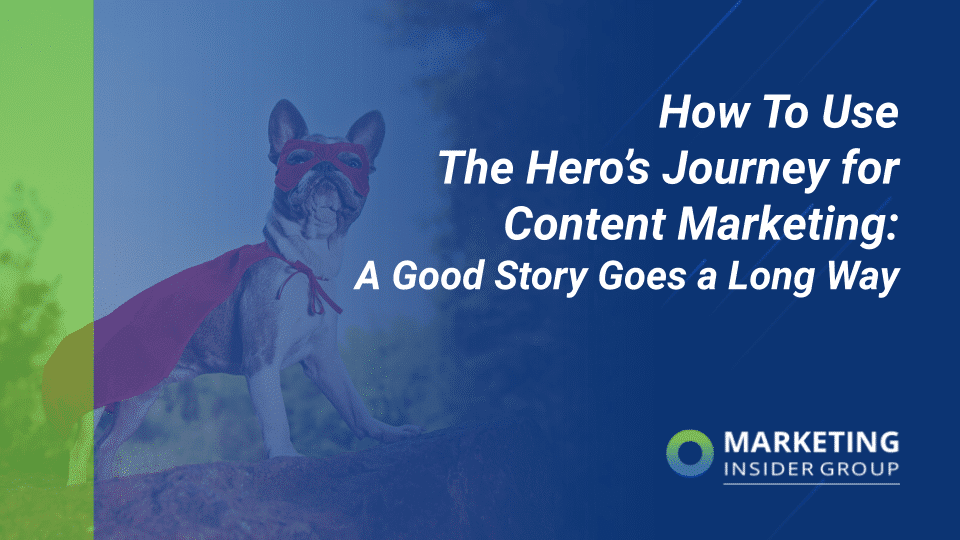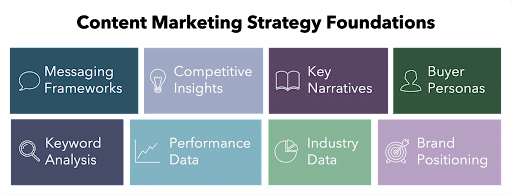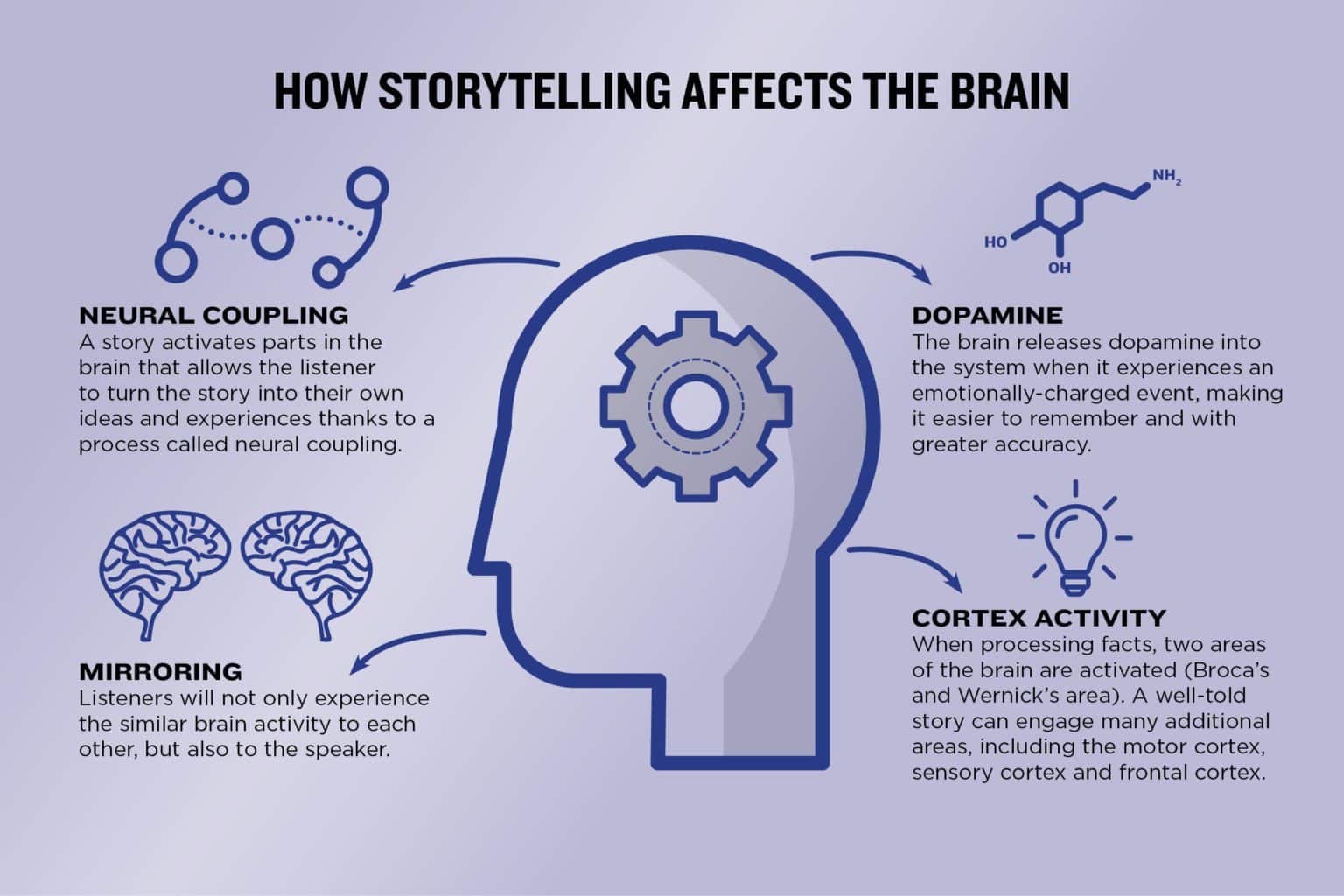
How To Use the Hero’s Journey for Content Marketing: A Good Story Goes A Long Way
The AI-fueled transformation of content marketing is both exhilarating and distressing. OpenAI and an avalanche of new content tools and best practices are overwhelming many content marketers. Despite the uncertainty many of us feel about the future of our profession, staying grounded in content foundations should provide confidence going forward.
Content foundations are must-have artifacts like buyer profiles, industry and competitor data, search keyword analysis, content performance data, and key marketing messages. You can’t build an effective content strategy without these facts and data.

But facts alone do not persuade companies to pay big money for software, consulting services, or other high-value items. Companies are made of people with emotions and desires.
That’s why you need another brick in your content foundation: the story.
How the Hero’s Journey framework creates powerful business stories
According to Dr. Jennifer Aaker, author, behavioral scientist, and Stanford professor, stories are remembered up to 22 times more than facts alone.
Sometimes you can find the threads of a story (aka a narrative) in the messaging your product marketing team developed. But this messaging is often brief, bulleted, and matter-of-fact. There is no sense of urgency to buy, or intrigue to prompt buyers to imagine a better future and act now to secure it.
A narrative, on the other hand, is a complete story with a setting, plot, characters, and conflict. The Hero’s Journey is a universal narrative structure found in both traditional and contemporary stories. Joseph Campbell, a renowned mythologist, introduced the concept in his book “The Hero with a Thousand Faces.” In it, he outlines 17 distinct stages of the Hero’s Journey, starting with the initial “Call to Adventure” and ending with “Freedom to Live.” Campbell’s structure can be simplified into three acts:
- Departure: The hero prepares for a journey into the unknown with help from a mentor.
- Initiation: Enemies put the hero’s new knowledge and abilities to the test in a series of trials.
- Return: The hero earns his reward and begins the trip back to the known world.

The Harry Potter series is a modern hero’s journey: As Harry ventures into the world of wizardry, he confronts a string of tests and obstacles. Along the way, he acquires knowledge of magic, bonds with mentors, and battles adversaries including the dark wizard.
Similarly, a business has a mission to help customers solve a problem. Or said another way, businesses are on a quest to help heroes overcome trials.
Here is a real-life illustration from content marketing, which I mentioned at the top of this article:
Content marketers (hero) are discovering the world of AI-generated content (journey). Experienced digital agencies (mentor) are offering knowledge to help content marketers outsmart search engines (enemy) to achieve page one ranking (reward).
Here is another example from the world of blockchain:
Prompted by the financial crisis of 2008, an anonymous developer (hero) seeks an alternative (journey) to traditional finance (enemy). He encounters other developers (allies) who share his goal and provide knowledge that helps him develop blockchain. The developers are thwarted by the banking industry (enemy), which spreads misinformation about blockchain (trial) because it threatens their power.
If you build out these brief narratives with more detail, you can tell the entire story of your company or product, why it exists, and for whom. That story becomes the heart and soul of everything you write. Every article, podcast episode, or web page should connect back to and reflect it.

Image source: Seed World
Putting hero’s journey narratives into practice
Before you throw up your hands and say you have too many time-sensitive content demands right now to build a narrative, consider how it can pay off right away and throughout your marketing cycles.
- Writer onboarding. Ask new writers to read the narrative as part of their onboarding process. Have them read the boring keyword analysis too, but a captivating story will help them understand the business in a way that buyer survey data cannot. Writers need to be steeped in every plot twist and turn so they can infuse the story into everything they create.
- Employee buy-in. Bring the story to life by enacting a dramatic reading of the narrative at your next company meeting or sales kick-off. Theater is a fun approach to helping employees adopt the mission and understand their purpose within it. Bonus: employees who believe in the hero’s journey will be more willing to help you create content.
- Content creation. Speed the creation of emotionally compelling, high-quality content. A detailed and well-written narrative is the cornerstone of your content plan. Every fork in the road your hero takes, every mentor or villain they encounter, is a piece of content waiting to happen. Here are a few examples:
- Point-of-view articles. Write about reasons to start the journey, the right tool to defeat the enemy, and how the hero’s life will be better if he overcomes adversity. Publish the articles on your blog or pitch to media as a bylined piece.
- Customer interviews. Use the narrative to inspire questions for a customer interview and help them tell their own heroic story. You’ll discover why they went on a quest, the mentors who helped them, and the villains who stood in their way.
- Explainer video script. The basic story outline is an excellent way to explain your product or solution. Engage and educate viewers by describing who (hero) benefits from your solution, the problem (trial) your product solves, and what it helps customers achieve (reward).
- SEO pillar pages. Some of the highest-ranking web pages describe a concept in its entirety, answering every conceivable question about it. Key narrative elements are also common questions. For instance, who (hero) uses widgets? What are the best practices (mentor) for using widgets? What are some emerging alternatives (journey) to widgets? What are the biggest threats (enemies) to the widget market?
- Social media campaign. Good stories tend to naturally stimulate creative visuals like illustrations, animations, and diagrams. Develop a campaign based on the story arc with accompanying creative for an engaging and memorable social media campaign.
How to get started writing a hero’s journey narrative
Facts and data are essential in building a content strategy, but they are not enough to captivate business buyers and inspire them to act. Stories that incorporate good and evil, struggle and triumph, are much more powerful motivators.
The Hero’s Journey is a proven framework for developing memorable stories that resonate with target audiences. Writing one may seem daunting at first, but there are many resources online to help. One place to start is the Joseph Campbell Foundation and its mythological resources database. Or you could take a quick course like this one on LinkedIn Learning from Shane Snow, journalist, and cofounder of Contently. You can also get guidance from practitioners like Joshua Reynolds, founder and CEO of Rob Roy Consulting. He has developed more than 100 narratives for business and consumer brands. Josh talks about his process on his blog, “Harnessing the Power of Myth in Corporate Narratives: The Persuasive Storytelling Model“.
You may want to start simply with an outline, get the input of a few key colleagues, and then iterate over time as you learn more about your company and buyers. It’s also important to validate the story with customers and company leaders with knowledge of the industry, products, and company vision.
If you invest in creating a gripping narrative, your content will transcend that of your competitors. The hero’s journey helps you get beyond the facts and figures in buyer personas, into the hearts of your customer heroes.






